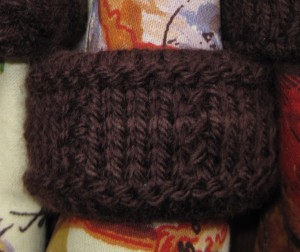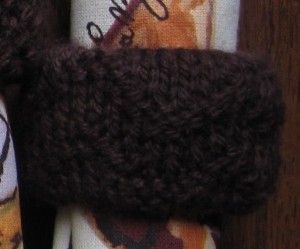Here are my suggestions for making and finishing the last two napkin rings if you don’t want to use plastic inserts.
For the Tile Stitch Napkin Ring & Ripple Stitch Napkin Ring
Similar to the other napkin ring patterns, the interiors of the Tile Stitch and Ripple Stitch napkin rings are formed by the beginning five rounds and ending five rounds in Stockinette stitch.
However, these two patterns contain a few extra rounds of Stockinette stitch at the beginning and end in order to center and show-off the tile and ripple patterns, so I would not recommend deleting all beginning and ending rounds of Stockinette stitch if you choose not to use plastic inserts. Instead, just subtract five rounds from both the beginning and end, and keep one or two rounds in Stockinette stitch as per the modified pattern.
So, for the Tile Stitch Napkin Ring, modifying the pattern for use without inserts would mean knitting all the stitches for two rounds at the beginning and two rounds at the end. For the Ripple Stitch Napkin Ring, the modified pattern would be to knit all stitches for one round at the beginning and two rounds at the end.
If you do choose to eliminate those beginning and ending five rounds, consider which cast on you’ll use so you get a nice edge and one that isn’t too loose (and curls) or too tight (and puckers). I chose to use the long-tail cast on because it results in a nice edge with good balance between tautness and give. For the long-tail method, leave yourself a 22” tail when making your slipknot.
Alternatively you can still knit those beginning and ending rounds in Stockinette stitch and sew the cast-on and bound-off edges together as the pattern instructs, just without using the insert. This would result in a double-thick napkin ring with a nicely finished interior.


